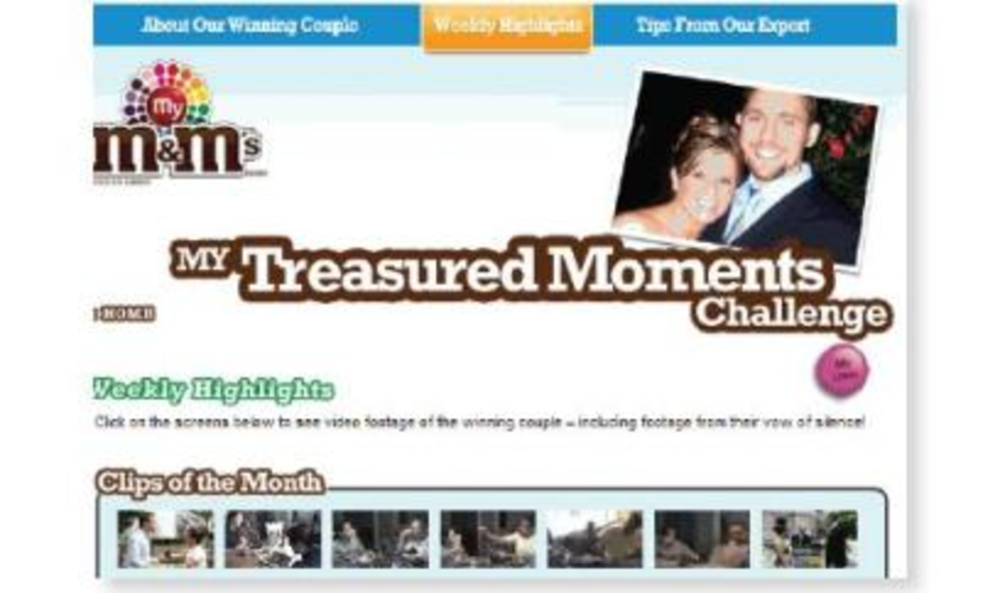According to the National Confectioners Association (NCA), total confectionery retail sales — including chocolate and non-chocolate items, as well as gum — equaled $29.1 billion in the US during 2007. The NCA also notes that the sector has one of the highest rates of new product releases, with about 1,500 new sweets hitting the US market each year. This means that industry marketers must determine the best ways to have their products stick out from the crowded candy shelf.
“You always have to have something new,” says Ryan Schader, VP of business development for Jelly Belly. To do well in the sweets sector, he emphasizes, it’s important to constantly innovate.
Candy is highly seasonal, creating even more competition for taste buds. Its sales peak during certain holidays, such as Valentine’s Day, Easter, Christmas and Hanukkah. But there is one season that reigns supreme. “Halloween is the big one,” says Ryan Bowling, PR manager, for the integrated marketing communications group of Mars Snackfood US.
Although currently dominated by Hershey, Mars and Wrigley, the US confectionery industry is actually very diverse, with more than 300 suppliers competing for 30% of sales, according to the NCA. And, it may soon see a seismic shift: Earlier this year, Wrigley announced an agreement to merge with Mars. Together, the two companies would overtake current market leader Hershey by a slim tenth of a percent in market share: 29.1% for the combined Wrigley/Mars entity, compared to an even 29% for Hershey. Wrigley stockholders will vote on the proposal on September 25.
Because the distribution channels for candy can be complex, it can take time to get new products into the stores. As a result, it’s important to maintain a dialogue with the consumer through direct channels such as e-mail and e-commerce, Schader says. For example, if customers can’t wait for their local store to stock the new product, they can buy it online at JellyBelly.com. However, the majority of Jelly Belly sales — as with most of the candy sector — take place in the retail environment. This is because, Schader explains, that if people with a craving for something sweet can’t readily access a particular brand, it’s unlikely they’ll search for it elsewhere.
“It’s obviously the ultimate impulse item,” he says. “We do not compete with our merchants.”
Mars uses its direct to consumer e-commerce channel to drive sales for personalized candy. “Personalization is a trend we’re investing in heavily through our My M&M’s [custom] business,” Bowling says.
Consumers can also order personalized Dove Chocolate directly from Mars at MyDoveChocolate.com. To drive consumers to this site, as well as MyMMs.com, the company primarily advertises online, Bowling says. In addition, Mars leverages social media.
“It’s really important to create an individual personality in the social media space,” Bowling says. “[Many] users use brands to distinguish their personality. With the popular social media, you have to create marketing that reaches consumers, [enabling them] to feel that they’re advocates themselves.”
From a branding standpoint, it’s also important to appear in either paid or natural search, says Steve Kaufman, SVP and media director at Digitas, an interactive agency that works with Mars. It’s also important that content doesn’t just live in one channel. “If you launch a TV campaign that is buzzworthy and memorable, then someone’s going to go to YouTube to find that content,” he explains.
Surprisingly, confectionery sales have not been impacted by the slow economy, says Jenn Ellek, director of trade marketing and communications for the NCA. “Consumers continue to reward themselves with small treasures such as confectionery products, because larger purchases are more difficult to make,” she says.
Campaigns
Jelly Belly
E-mail blast
In May, Jelly Belly introduced a new line of jelly beans inspired by Cold Stone Creamery’s Signature Creation ice cream flavors. To launch the new line, Jelly Belly sent a targeted e-mail blast to 500,000 of its subscribers. The company also redesigned its home page to feature the new offering. In addition, site graphics drove traffic to the Jelly Belly online shop. For the duration of the campaign, sales for the new Cold Stone Creamery Mix hit the online shop’s number one position, selling more than 10 times the second-ranked flavor. Overall, the online shop’s conversion rate increased by 21% and the quantity of purchased products went up by 55%.
My M&M’s
Contest
Last summer, My M&M’s customized candies launched a challenge called My TreasuredMoments. Couples were asked to write a 500-word essay describing a treasured moment in their lives involving My M&M’s. More than 300 submitted essays. The winning couple took a vow of silence and agreed to communicate for 31 days only using My M&M’s. During that month, people could log onto www.mymms.com/win to view video footage of the couple communicating with My M&M’s in their home. The couple completed the challenge, winning $31,000.
Hershey’s Bliss
Viral marketing campaign
In order to promote its new Bliss line to female chocolate lovers, Hershey’s worked with viral marketing company House Party to organize more than 10,000 Bliss-themed parties, which took place from April 25 to 27. Hosts could go to Houseparty.com/hersheysbliss before the party date to share party ideas. Overall, more than 129,000 guests attended the parties, where they could sample three different Hershey’s Bliss flavors. Afterwards, participants posted more than 26,000 photos, 50 videos and 15,000 blog entries to the site. House Party was also passed along 7.5 million to 8 million due to word of mouth from the event, says Kitty Kolding, CEO of House Party.







